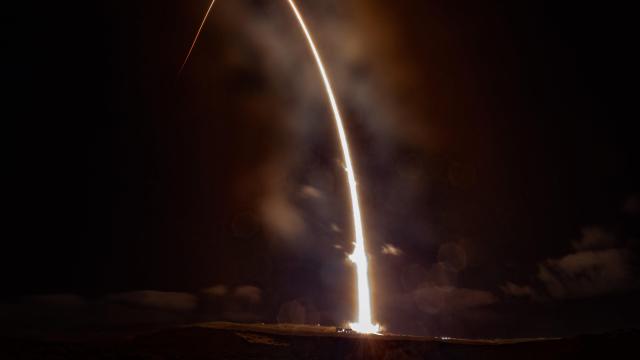SpaceX used its Starlink satellites to send and receive a text message from low Earth orbit in an effort to expand its connectivity beyond the reach of traditional cell tower signals.
On Monday, January 8, the space company tested one of its new direct-to-cell satellites, sending a text message using the T-Mobile network for the first time, SpaceX announced on Wednesday.
Less than a week earlier, SpaceX launched six Starlink satellites with direct-to-cell capabilities on board a Falcon 9 rocket as part of the latest batch of 21 satellites sent to low Earth orbit. The company is aiming to build a space-based cellular broadband network to enable mobile network operators around the world to provide access to texting, calling, and browsing to consumers in so-called “dead areas” on land, lakes, or coastal waters, according to SpaceX.
“Connecting cell phones to satellites has several major challenges to overcome,” the company wrote. “Starlink satellites with the [direct-to-cell capabilities] are equipped with innovative new custom silicon, phased array antennas, and advanced software algorithms that overcome these challenges and provide standard LTE service to cell phones on the ground.”
In December, Elon Musk’s private space venture was granted approval to test direct-to-cell calls between Starlink satellites and regular mobile phones. The Federal Communications Commission (FCC) gave SpaceX a temporary license to test the new satellite technology over a duration of six months, with 2,000 test devices and 840 satellites.
Starlink’s services will begin with text messages, while voice and data coverage are meant to follow, possibly in 2025. The company still needs a license to begin offering direct satellite connectivity to its customers.
The idea behind the new technology is to deploy the equivalent of cellphone towers in space, connecting phones to satellite networks without the need for terrestrial network cell towers. SpaceX isn’t the only company wanting to expand cellular reach. Texas-based AST SpaceMobile launched its prototype satellite in September 2022 (on board SpaceX’s own Falcon 9 rocket) which succeeded in making the first ever 5G phone call to a Samsung Galaxy S22 using AT&T spectrum. Lynk Global also deployed three satellites designed to deliver service from space directly to cell phones on Earth.
The FCC is still working to develop a legal framework through which companies can provide satellite service directly to cell phones.
Want to know more about Elon Musk’s space venture? Check out our full coverage of SpaceX’s Starship megarocket and the SpaceX Starlink internet satellite mega constellation.
